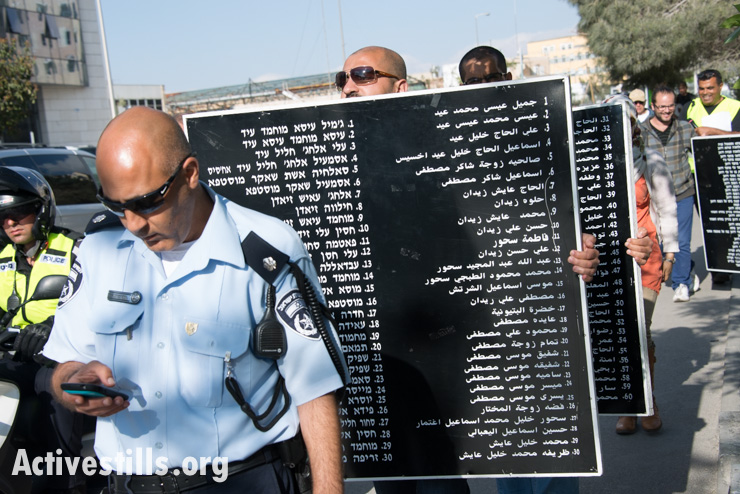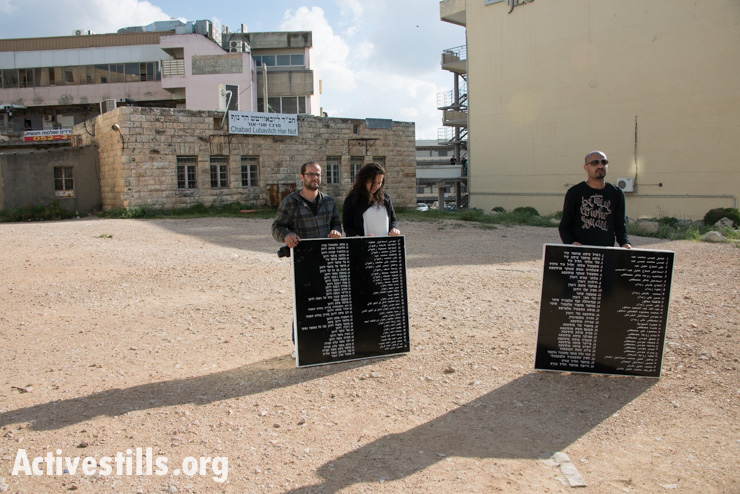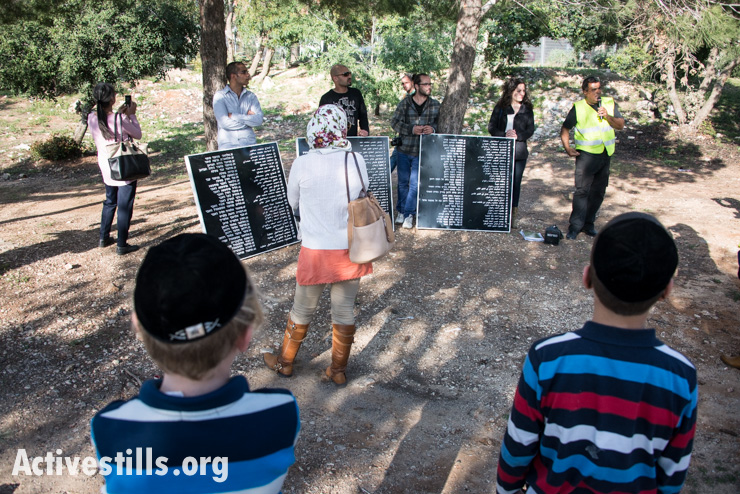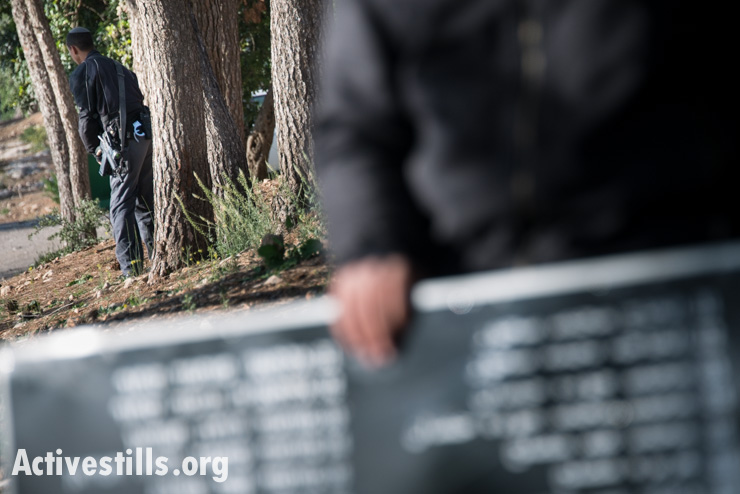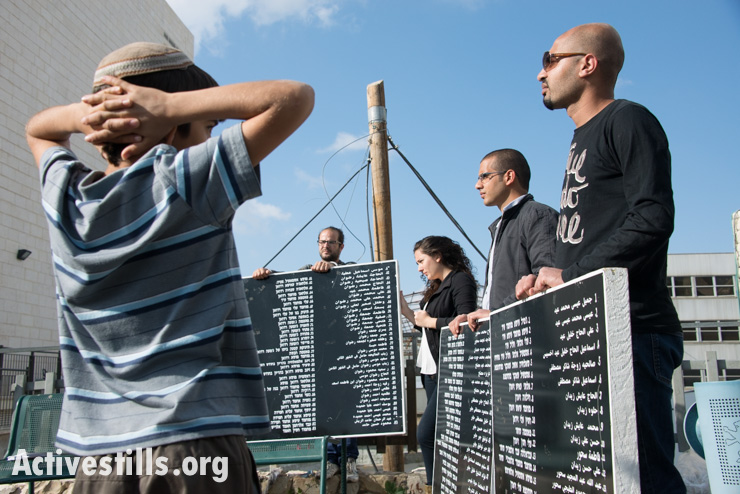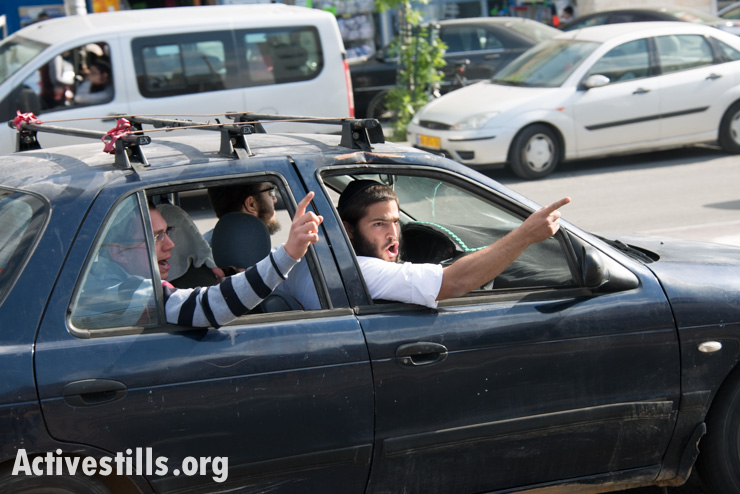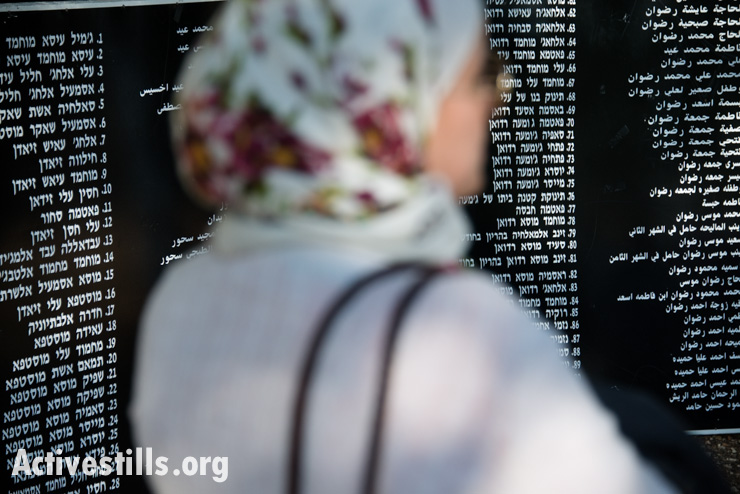Activists walk through a West Jerusalem neighborhood carrying the names of some 100 men, women and children massacred 66 years ago by Zionist militias in the Palestinian village of Deir Yassin. They are met with curiosity, indifference and open hostility.
Text and photos by: Ryan Rodrick Beiler/Activestills.org
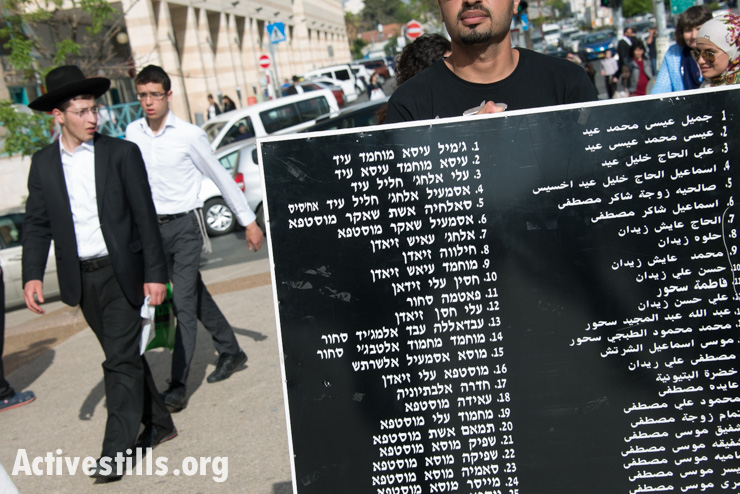
Jewish Israeli, Palestinian, and international activists carried three black panels bearing some 100 names through the streets of what is now the Givat Shaul neighborhood of West Jerusalem on Thursday. They marched to commemorate the massacre and displacement of the Palestinian village of Deir Yassin by Zionist militias 66 years ago on April 9, 1948. Organized by the Israeli organization Zochrot, whose name means “remembering,” the event memorialized those killed and recounted the village’s history to Israeli passers-by, who were at times curious, indifferent and hostile.
A woman passing the procession as it assembled on Kanfey Nesharim Street complained to her companion, “Oh, it must be that Deir Yassin crap.” A young worker in a sandwich shop asked, “What is this?” and snapped a photo with his iPhone. Just three days prior, vandals had spray-painted “Death to Arabs” on grave markers in Deir Yassin’s cemetery.
As the participants carried the names along what was once the main street of a thriving Palestinian village, it was most often children who stopped to listen to Zochrot’s Umar Al-Ghubari recount the significance of a particular location along the way, or to read the names of the dead.
The Deir Yassin massacre was a pivotal moment of the Nakba and in the lead-up to the 1948 War. Some 100-200 Palestinians, including women and children, were killed by the extremist Zionist militias the Irgun (Etzel) and Stern Gang (Lehi). Some were shot in battle, others executed. Others were killed when grenades were thrown into their houses. In some cases, whole families were gunned down.
Exact numbers of the dead were disputed from the start, as even the perpetrators of the massacre inflated the death toll in order to sow terror throughout other Palestinian communities so that they would flee their homes. Other villages did indeed flee in fear, but the massacre also cemented the motivation of neighboring Arab countries to fight rather than accept partition.
A member of the Hagana Zionist militia present for Thursday’s procession recounted his role in the massacre: removing the bodies after the Irgun and Stern Gang had done most of the dirty work. He described it as the worst thing he ever experienced.
Dina Elmuti, the granddaughter of a Deir Yassin survivor, writes of further horrors:
My grandmother’s cousin, Naziha Radwan, was six at the time of the massacre. She survived by covering herself in her grandmother’s blood, hiding beneath stiffened bodies and pretending to be dead.
Walking along the dirt path, my grandmother pointed to the home of her paternal aunt, Basma Zahran, and recounted another tragedy. “She and her four children were shot and their bodies were burned in there,” my grandmother said. “Three little girls and a newborn baby boy, only a few hours old.”
It was hard to imagine these horrific events taking place on what now is a busy city street lined with shops and restaurants, eventually terminating in a park with playgrounds, basketball courts, and the Kfar Shaul mental hospital, whose buildings include a few of the original homes that were once the center of the village. Across the valley lies the Yad Vashem Holocaust memorial. In the aftermath of the massacre, prominent Jewish scholars, including Martin Buber, urged Prime Minister David Ben-Gurion to leave Deir Yassin uninhabited, or at least that its settlement be postponed, writing that it had become “infamous throughout the Jewish world, the Arab world and the whole world.” Their repeated messages were ignored.
Recounting more of her grandmother’s testimony, Elmuti writes of a history prior to Deir Yassin’s violent destruction that speaks of the potential for peace and belies the myth of endless hatred between Jews and Palestinians:
Prior to the massacre, we were on good terms with the Jews in Givat Shaul. We shared food, celebrated together, paid condolences to one another, babysat for each other. There was peace here before the Zionists came and destroyed everything.
Zochrot’s mission is “to challenge the Israeli Jewish public’s preconceptions and promote awareness, political and cultural change within it to create the conditions for the Return of Palestinian Refugees and a shared life in this country.” While getting the Israeli Jewish public to acknowledge the injustices of the Nakba in general and the massacre of Deir Yassin in particular may be an unpopular uphill battle, a shared life based on a just and lasting peace will not be possible without such truth-telling.
